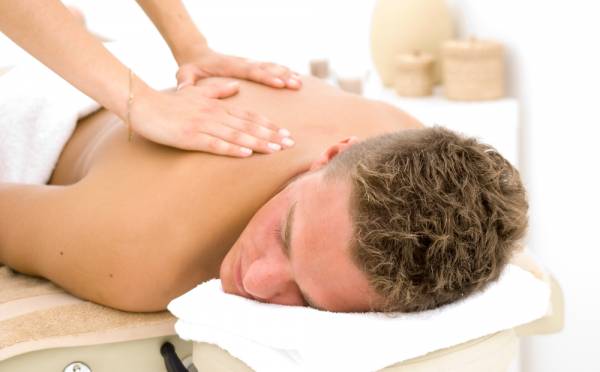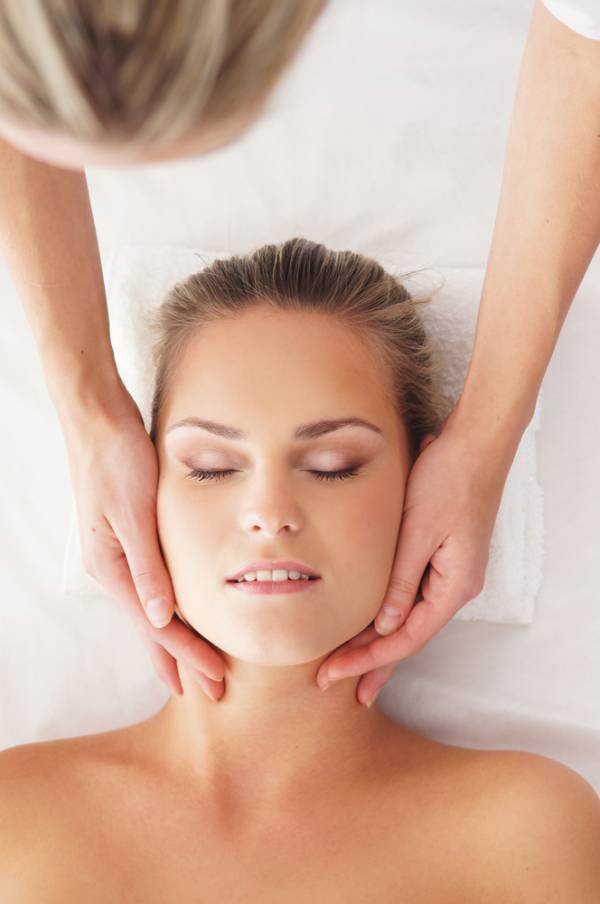Over the past few weeks, I’ve told you about the problems I have with my own adrenal system and neurotransmitter production. Basically, I make way too much excitatory stuff and my cortisol production is beginning to become deranged. This is the result of asking too much of my body and brain for too long. Too much stress, both physical and mental, can eventually cause you to break.
I want to stop before I completely break. I think I’m just bent at this point. So, I decided to finally take action and look into some alternative and natural therapies to deal with lowering stress and regulating the adrenal system. Last week we looked at acupuncture and how it can help the adrenal system return to a normal state of function. This week, I explored how massage therapy can help to lower hormones like epinephrine and norepinephrine and regulate cortisol in the hopes that I can eventually become a very calm, Zen-like being. Cross your fingers, guys!
As I began researching massage therapy, I started to wonder why I hadn’t considered it before. There is a wealth of information on massage therapy and how it can positively impact depression and anxiety, as well as help those dealing with eating disorders and myriad other illnesses. Multiple studies have shown that massage therapy can lower cortisol levels, increase dopamine and serotonin (our happy, feel-good hormones), and lower excitatory hormones like norepinephrine and epinephrine.
If you have too much norepinephrine or epinephrine it can lead to feelings of anxiety. Too little dopamine and serotonin can cause depression and other psychological problems. If massage fixes these, it seems like a no-brainer, right? I guess I always considered it one of those things you did if you had lots of extra time and money and wanted to relax a little. I likened massage to taking a long hot bath, with candles and rose petals and Enya playing in the background. Not for me. I’d get bored in about five minutes and start frantically thinking about all the things I could be doing if I weren’t sitting in this silly tub or getting a massage. Yes. I am that bad. Picture a squirrel on meth. That’s me on a bad day.
 In order to get a better understanding of how massage could help me and others to heal our adrenal systems, I decided to find an expert on the topic. Melissa Finley, LMT, owner of Mending Hands Massage Therapy in Sarasota, Florida, has over 2,300 hours of training and advanced certifications in prenatal, postnatal, and fertility massage. Originally, Melissa started Mending Hands in New York City and became one of the top-rated private practices in Brooklyn. In her “About Melissa” section on her website she states she thinks “napping is important.” Obviously, I could learn a thing or two from this chick!
In order to get a better understanding of how massage could help me and others to heal our adrenal systems, I decided to find an expert on the topic. Melissa Finley, LMT, owner of Mending Hands Massage Therapy in Sarasota, Florida, has over 2,300 hours of training and advanced certifications in prenatal, postnatal, and fertility massage. Originally, Melissa started Mending Hands in New York City and became one of the top-rated private practices in Brooklyn. In her “About Melissa” section on her website she states she thinks “napping is important.” Obviously, I could learn a thing or two from this chick!
I asked Melissa how massage can benefit those, like me, who really need to work on anxiety and regulating neurotransmitter and cortisol production. Melissa explained:
Your body can move between two main states of being – the sympathetic state and a parasympathetic state. The sympathetic mode is what we think of as fight-or-flight mode. It’s when the body triggers the autonomic nervous system’s stress hormones and ups our adrenal response. Most of us are in some level of sympathetic state just dealing with day-to-day stresses. Massage has been shown to help the body shift into a parasympathetic state. By supporting real stress relief, massage can set the body into a “rest and digest mode.” What’s awesome is even a relaxation massage has the opportunity to chemically support a healthier state of being.
And yes, multiple studies have shown that regular massage definitely decreases those hormones that cause anxiety and raise calming, happy hormones and keep cortisol lower.
Now, if you’re like me you might be wondering how often you need to get massaged to notice an improvement. I, of course, am thinking I want to know the minimum effective dose so I can, you know, pack the most I can into my schedule. Oh, boy. I still have lots to learn.
Melissa believes that the time and sessions required to notice a difference in mood and adrenals is specific to each individual. She said:
Some people find amazing benefits during the first session, others take more time to settle in and fully receive the treatment. One of the other aspects of massage that can prove to be helpful, is that the more massage your receive, the more you gain from it’s benefits. Kind of like the way you work up the endurance to run a marathon, the more your body receives massage, the deeper and more effective massage becomes.
So, like most things in the health and fitness world, the more consistent you are the greater your outcomes.
 Of course, just like trainers and coaches and workout programs, there are many different massage therapists and types of massage out there and I figured that finding the right person and the right kind of massage to tackle adrenal issues would be important to maximize outcomes. Melissa believes taking the time to research massage therapists in your area who have experience working with adrenal issues is a great way to start. Once you think you’ve found a good fit, she believes it would be best to “start by getting a few sessions with a therapist who is willing to work slow and connected. It’s a great way to build trust and expectation between client and practitioner, as to cut down the possible anxiety of a new treatment. Once trust is established, Swedish, Shiatsu and even deep tissue can help with both the physical stress and psychological anxiety.”
Of course, just like trainers and coaches and workout programs, there are many different massage therapists and types of massage out there and I figured that finding the right person and the right kind of massage to tackle adrenal issues would be important to maximize outcomes. Melissa believes taking the time to research massage therapists in your area who have experience working with adrenal issues is a great way to start. Once you think you’ve found a good fit, she believes it would be best to “start by getting a few sessions with a therapist who is willing to work slow and connected. It’s a great way to build trust and expectation between client and practitioner, as to cut down the possible anxiety of a new treatment. Once trust is established, Swedish, Shiatsu and even deep tissue can help with both the physical stress and psychological anxiety.”
Melissa also suggests being very open and honest with your massage therapist about what results you are looking for from the treatment. She advises asking lots of questions and finding a good listener. So, you should research and find a reputable, experienced therapist then commit to a regular routine until you find your individual dose.
Massage therapy, as we’ve discussed, can be an effective treatment for anxiety and adrenal issues if the right provider, frequency, and plan is implemented. Plus, there are no negative side effects. That’s something we certainly can’t say about most of the drugs and traditional therapies used to treat mood disorders. Like Melissa told me, “It’s a proven therapy to help with stress on both the physical and psychological levels. Plus, one should never underestimate the power of taking even an hour for yourself to breath, rest, and receive therapeutic attention.”
Most of us, especially me, should take that statement to heart. Slowing down and taking the time to do something that nurtures our bodies in a more gentle way is something we need to do even if it feels like “wasting time” initially. Eventually, I hope more people view massage as an essential part of physical and psychological health maintenance rather than a luxury to be indulged in when we have the time.
References:
1. Field T, Hernandez-Reif M, Diego M, Schanberg S, Kuhn C., Cortisol decreases and serotonin and dopamine increase following massage therapy. Touch Research Institutes, University of Miami School of Medicine, Miami, Florida , 2005.
2. Field T, Schanberg S, Kuhn C, Field T, Fierro K, Henteleff T, Mueller C, Yando R, Shaw S, Burman I., Bulimic adolescents benefit from massage therapy. Touch Research Institutes, University of Miami School of Medicine, Miami, Florida , 1998.
Photos courtesy of Shutterstock.






